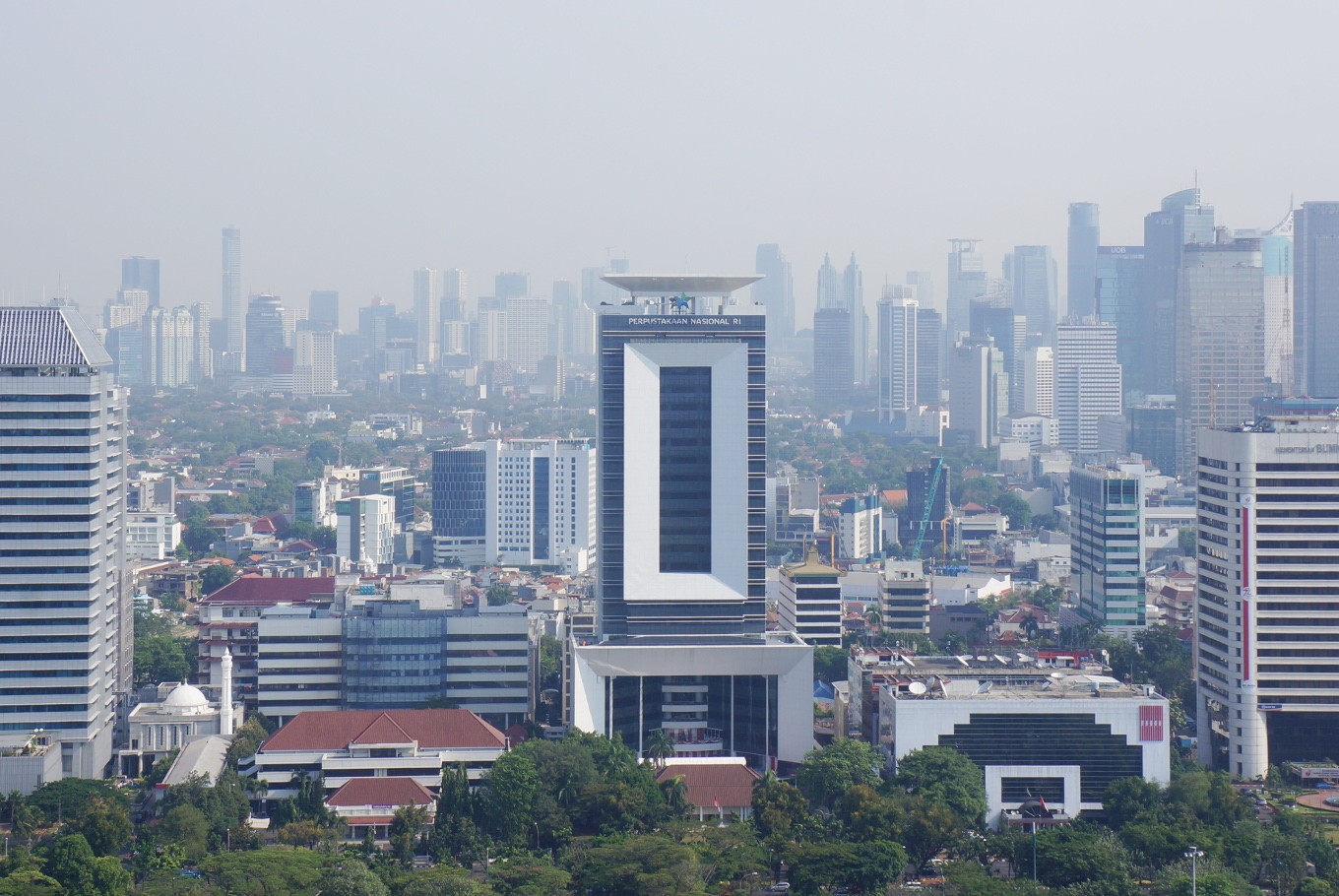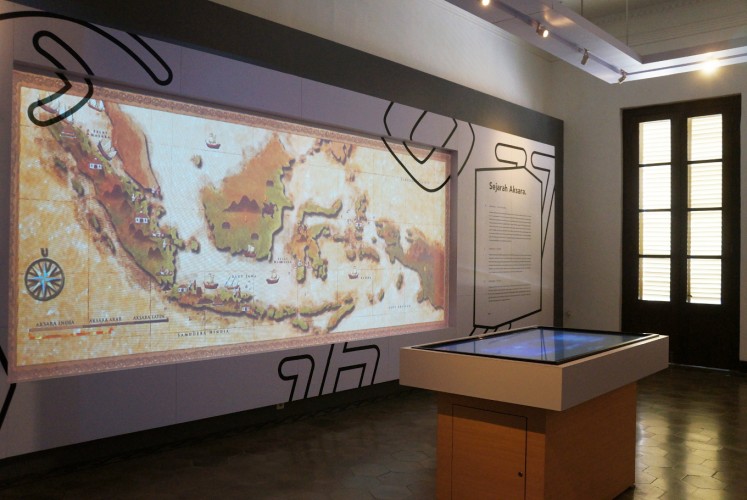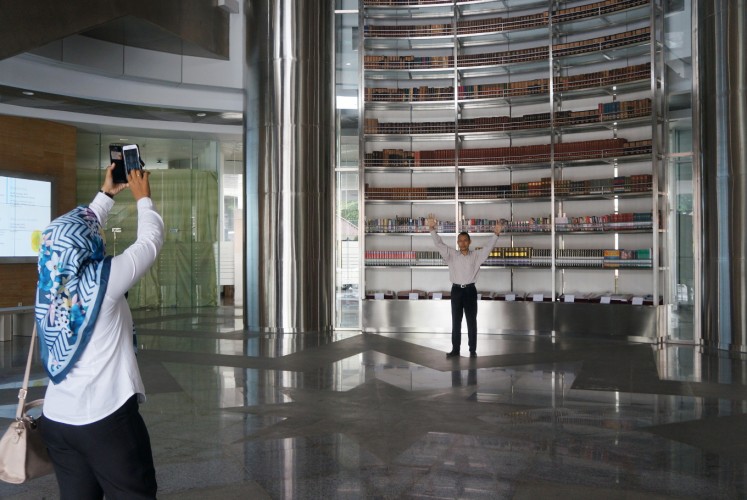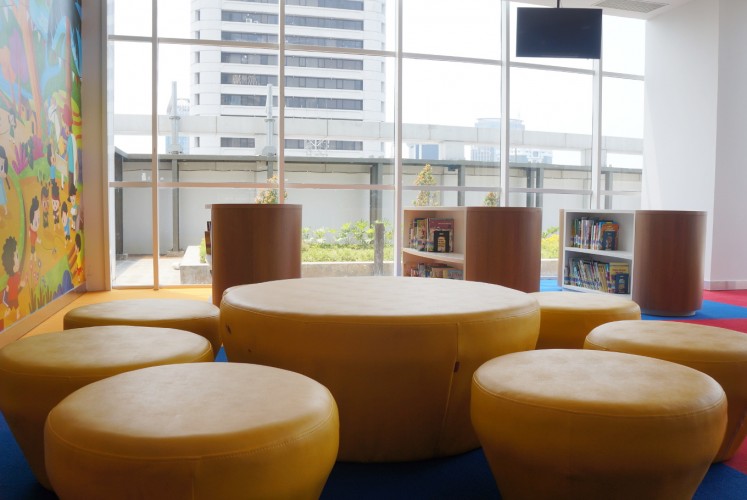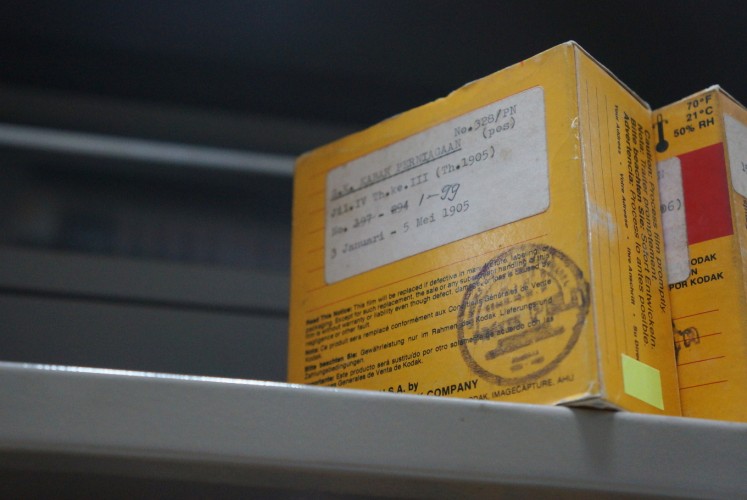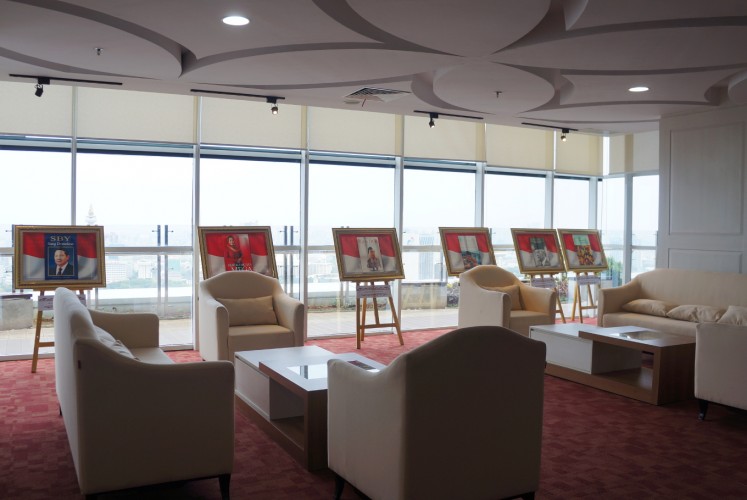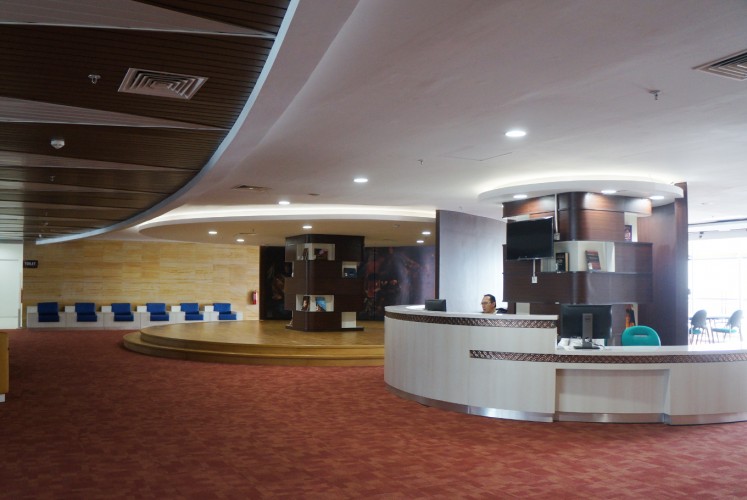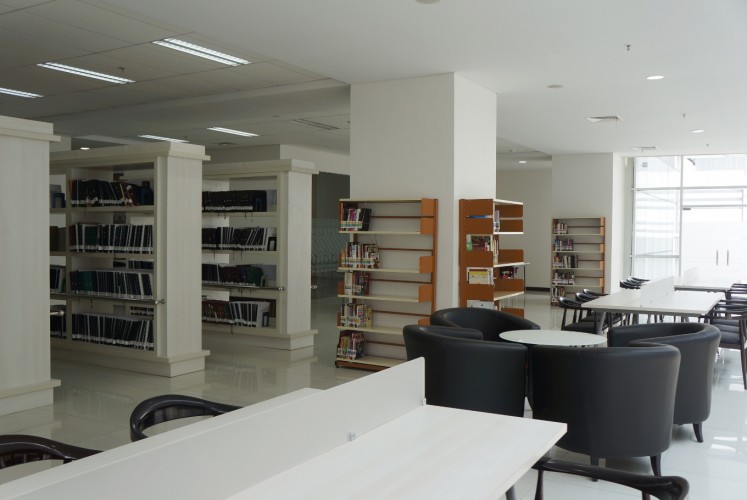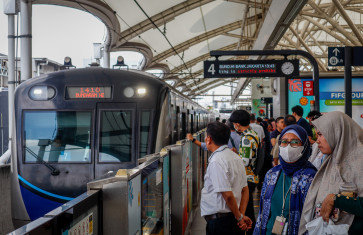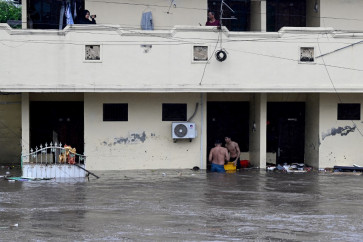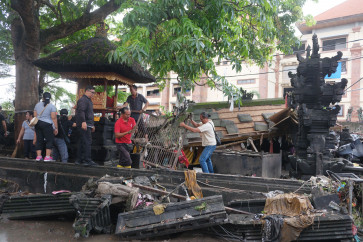Popular Reads
Top Results
Can't find what you're looking for?
View all search resultsPopular Reads
Top Results
Can't find what you're looking for?
View all search resultsJakpost guide to the National Library of Indonesia
Change text size
Gift Premium Articles
to Anyone
T
he National Library of Indonesia is a 24-story building located on Jl. Medan Merdeka Selatan No. 11, Central Jakarta, right in front of the National Monument (Monas).
Dubbed the tallest national library in the world, it was officially launched by President Joko “Jokowi” Widodo on Sept. 14 and is open to the public.
The library was previously located on Jl. Salemba No. 28A in Senen, Central Jakarta, and some of its working units still operate there.
How to get there
Jl. Medan Merdeka Selatan can be accessed by both motorcycle and car. The building itself has sufficient parking space in the basement area. However, keep in mind that the odd-even license plate traffic policy is in place on main roads near the area, such as Jl. M.H. Thamrin and Jl. Sudirman. Rallies are frequently held in front of City Hall, which is located not too far from the library, making the traffic conditions in the area unpredictable.
Those who ride Transjakarta buses can get off at the Balai Kota or City Hall bus station. Visitors can also use the free Jakarta City Tour buses that stop at the same station.
What to wear
Casual outfits are fine, but wear comfortable shoes when exploring the library. Do note that shoes should be taken off when entering the Children Service room.
What to do
Upon entering the front area of the library, visitors will find an old building called the Heritage Building. It is the place where items related to Indonesians’ interest in reading, starting from the history of the alphabet and description of different types of alphabets across the archipelago, to the history of mobile libraries. Some of them are explained using a giant screen with touch-screen control panels.
There are also displays of media that were used by our ancestors to write. Among them are Chinese paper (kertas Cina), palm leaf, bamboo and Alim wood bark (Aquilaria). Some of the collections that should not be missed are the ancient texts Negarakertagama, Pararaton and Al-Quran Al-Karim (Quran Al-Karim). Additionally, it also exhibits photos of President Joko "Jokowi" Widodo meeting world leaders.
'Al-Quran Al-Karim' (Quran Al-Karim) is one of the ancient texts on show at the Heritage Building. (JP/ Ni Nyoman Wira)Upon entering the main lobby of the library building, visitors will be greeted by a giant bookshelf adorned with an Indonesian map in the upper area. Some of the books available here include encyclopedias, novels, biographies and books on traditional fabrics.
“The books stored here are from the 14th, 16th and 18th centuries. But visitors can also find the latest books,” Agus Sutoyo, the head of the general collection service at the National Library of Indonesia, told The Jakarta Post.
The room hosts a seating area on its left and an information center on its right. But don't miss out on the lobby’s entrance gate because it has books on six Indonesian presidents, from Sukarno to Jokowi. There are also books on Indonesia’s youth, the 1965 incident and books that are mostly in Dutch.
A visitor takes a photo of the giant bookshelf in the lobby of the National Library of Indonesia. (JP/Ni Nyoman Wira)Visitors should go to the second level as it is the place to get a membership card and information access. The library has about 70 computers and all you need to do is submit the book title or author’s name that you are looking for and the computer will give you a queue number and which floor you should visit.
The third and fourth floors are often used as exhibition areas, while the fifth floor is to the library’s office.
The seventh floor is dedicated to children, the elderly and disabled people. Upon stepping out of the elevator, the colorful Children Service room is located on the left side, while the service room for the elderly and disabled people is on the right. Open from Monday to Sunday, the former is filled with books, toys, a playground, outdoor balcony and nursery room, while the latter boasts a collection of books on health as well as books in Braille. Chairs, sofas and desks are provided for visitors.
One of the seating areas at the Children Service room on the seventh floor of the National Library of Indonesia. (JP/Ni Nyoman Wira)The eighth floor contains audiovisual collections. It is the place where people can watch films from different genres or read old newspapers from the 1800s and more in microfilm form. It also has a private discussion room and a mini theater that can accommodate over 35 people.
The ninth floor is home to a collection of ancient texts from across the archipelago.
Read also: Jakpost guide to Monas area
One of old newspapers that were transformed into microfilm. It can be found on the eighth floor of the National Library of Indonesia. (JP/Ni Nyoman Wira)The 10th to 13th floors are dedicated to deposits and closed monograph collections. “But we currently cannot serve the public on those floors because everything is still in the relocation process,” said Agus. “The collections number in the hundreds of thousands and they have not yet been shelved.”
Meanwhile, the 14th floor is the place for rare books. However, the public still cannot visit the place because the collections haven’t been placed yet.
The 15th floor is said to be the center of reference in Indonesia. “It is popular among senior year college students who are doing their skripsi [small scale research-based writing] or thesis,” Agus explained.
All kinds of maps, including the first map in Indonesia, photos and classic paintings can be found on the 16th floor, while the 17th and 18th floors serve as an office for the Indonesian Sciences Academy (AIPI). The 19th floor is home to the library’s multimedia room.
Some of the bookshelves on the 22nd floor of the National Library of Indonesia. (JP/Ni Nyoman Wira)Those who are looking to read current and old newspapers and journals can visit the 20th floor.
Agus said the 21st and 22nd floors are perhaps the most crowded spots in the library. “There are loads of books for visitors to read.”
A lot of books from different genres can be found on these levels, such as military, religion, literature, novels, computer techniques, health and languages. Some of them are in English, but most are in Bahasa Indonesian. Sofas, chairs, desks and power plugs are provided to ensure that visitors feel at home.
The executive lounge of the National Library of Indonesia on the 24th floor. (JP/Ni Nyoman Wira)The 23rd floor offers books on international affairs, while the 24th floor caters to those interested in reading books about Indonesia.
As it the highest level of the building, the 24th floor also has an executive lounge that can host small events, press conferences and meetings. It also has a balcony facing the National Monument, but that is closed to the public.
The 24th floor of the National Library of Indonesia where a collection of books about Indonesia are located. (JP/Ni Nyoman Wira)Where to eat
The library is equipped with a canteen on the fourth floor that has a clean and spacious ambiance with about three to four food stalls. They mostly serve Indonesian delicacies, starting from bakso (meatball) to nasi campur (rice mixed with different side dishes). Prices start at Rp 15,000 (US$1.1) per meal.
Unlike a regular food court, visitors should order their food first at one of the stalls then pay for their meal in a cashier section.
The Elderly and Disabled People Service room on the seventh floor of the National Library of Indonesia. It has a collection of books about health and books in Braille. (JP/Ni Nyoman Wira)Tips
- The library is open from Monday (8:30 a.m. to 4 p.m.) to Saturday (9 a.m. to 4 p.m.), but it is better to come as early as possible because it is usually crowded from the afternoon until closing time, especially on Saturdays.
- The Children Service and the Elderly and Disabled People rooms are open from Monday to Friday (8:30 a.m. to 4 p.m.) and on weekends (9 a.m. to 4 p.m.).
- Currently, people are not allowed to borrow any books because the library is still in the process of arranging their collections.
- Those interested in taking out a membership card can do so online via the e-Resources or iPusnas app. “But if you want to read a book in the library, you still need to print out the membership card,” said Agus.
- Locals, who want to become library members, should bring their identity card (KTP), while students can use their student cards and children can bring their family cards (Kartu Keluarga). Foreigners can also become member on presentation of their passports.
- Librarians and Wi-Fi services are available on every floor.
- A prayer room can be found at the sixth floor.
- Books on the tall bookshelf in the lobby can be read on-site.
- An elevator and escalator are provided. (kes)

